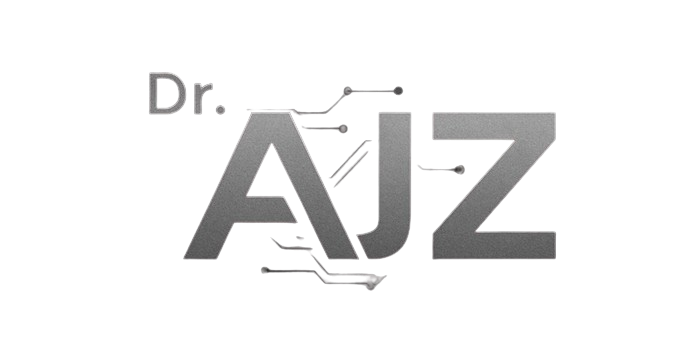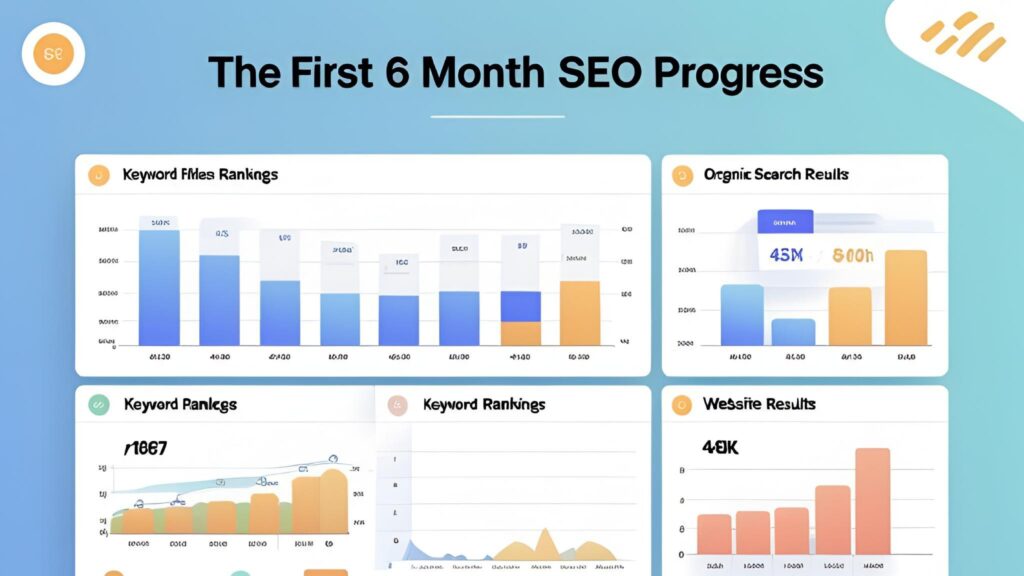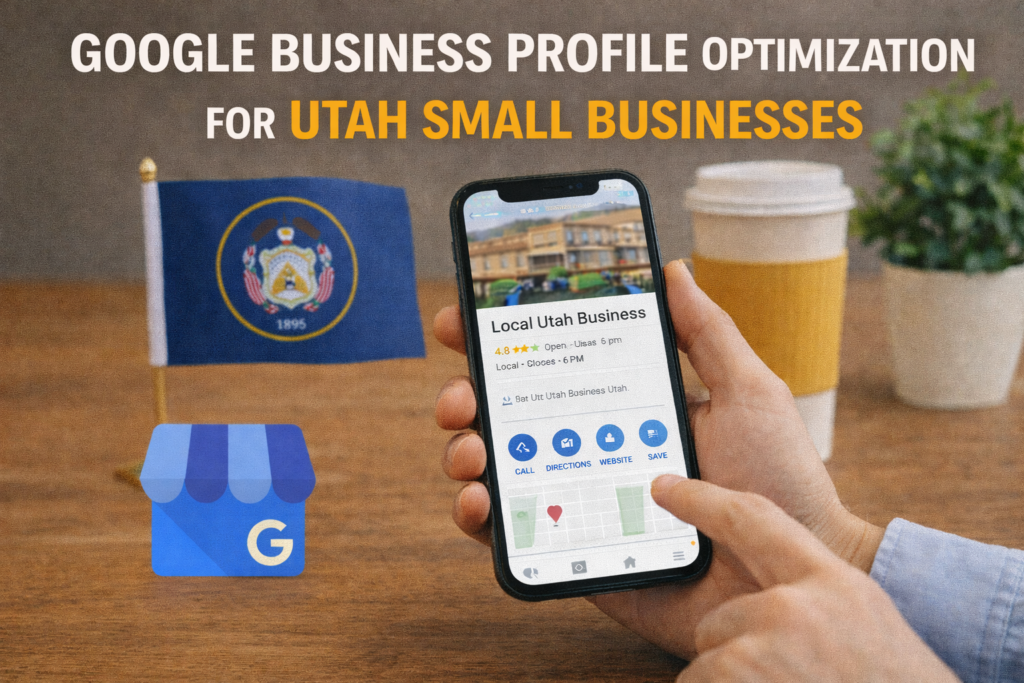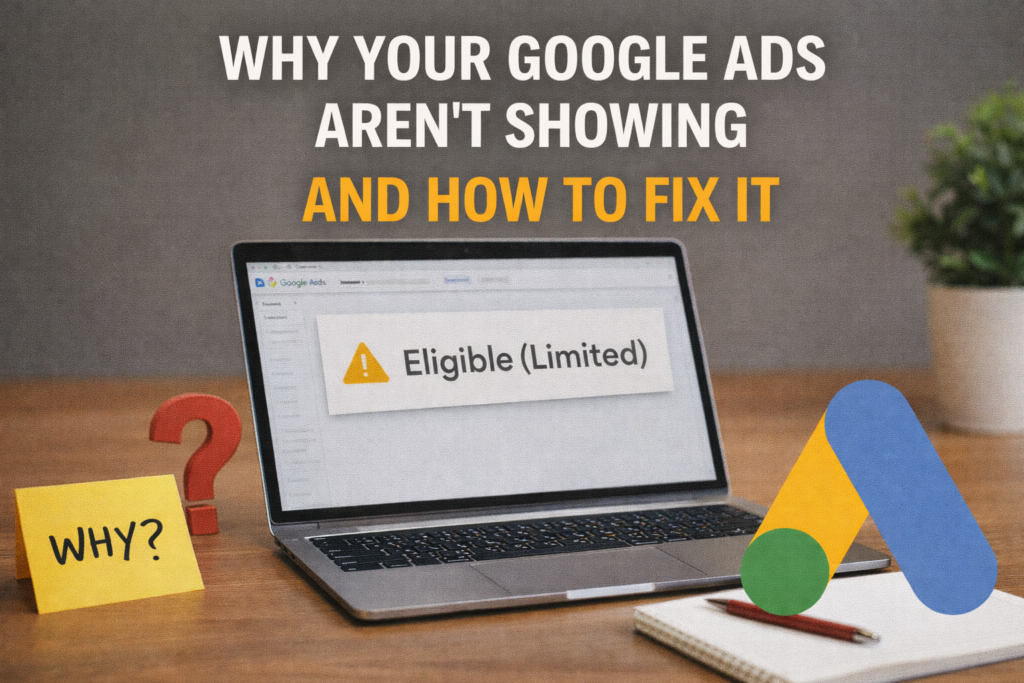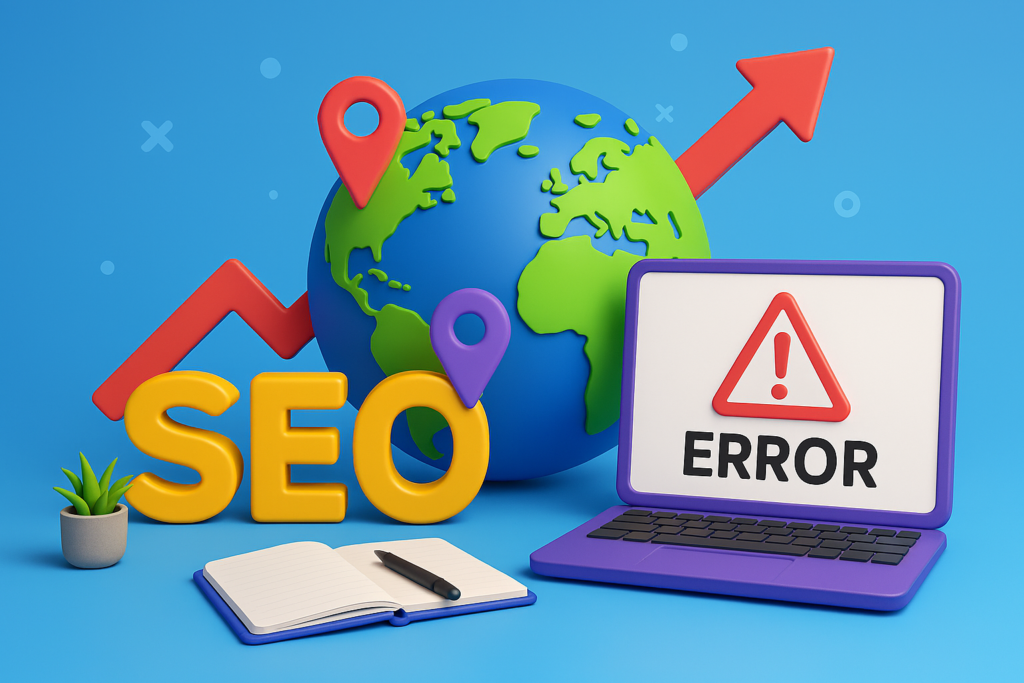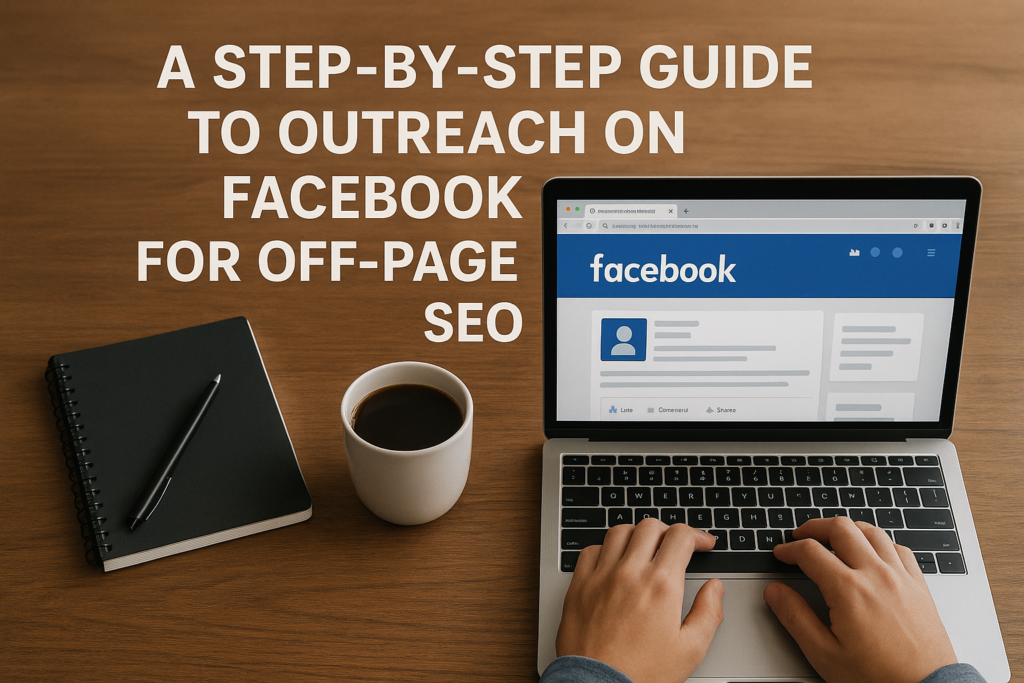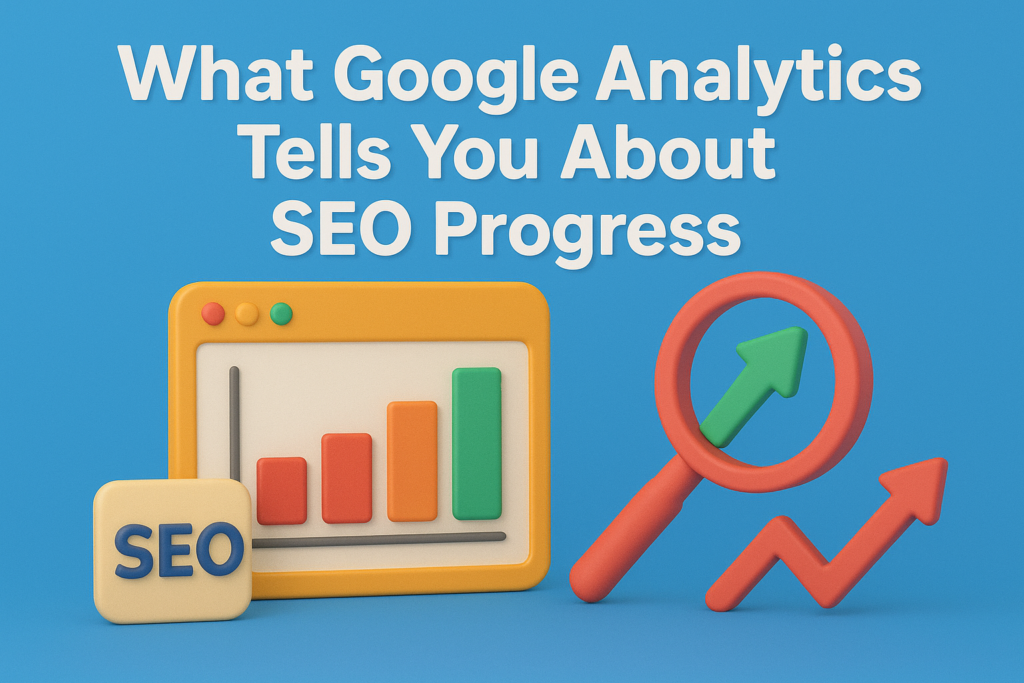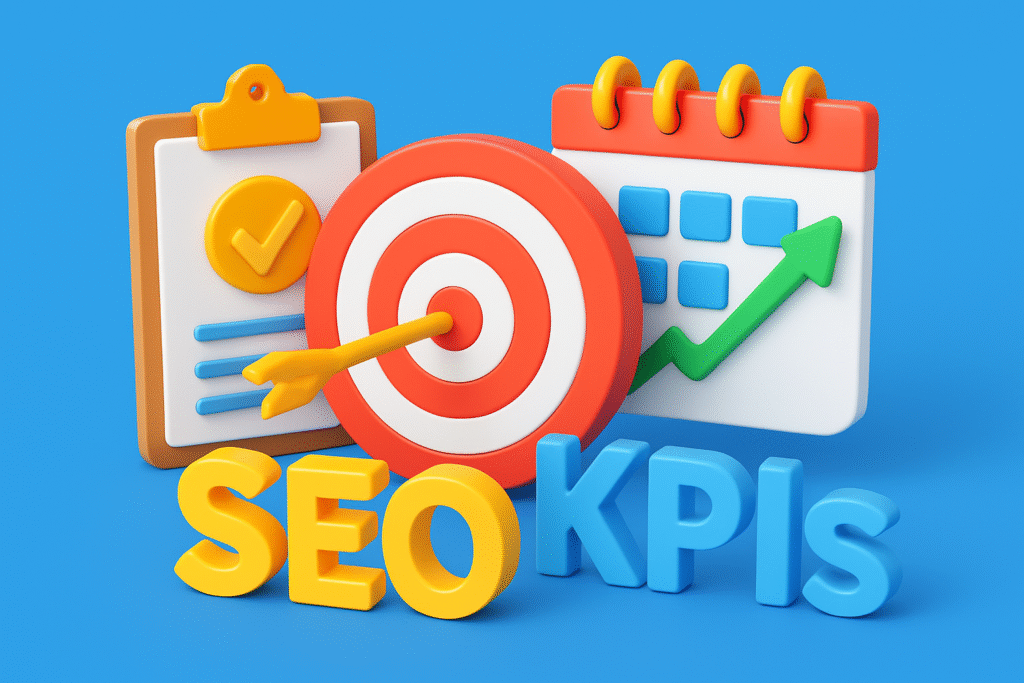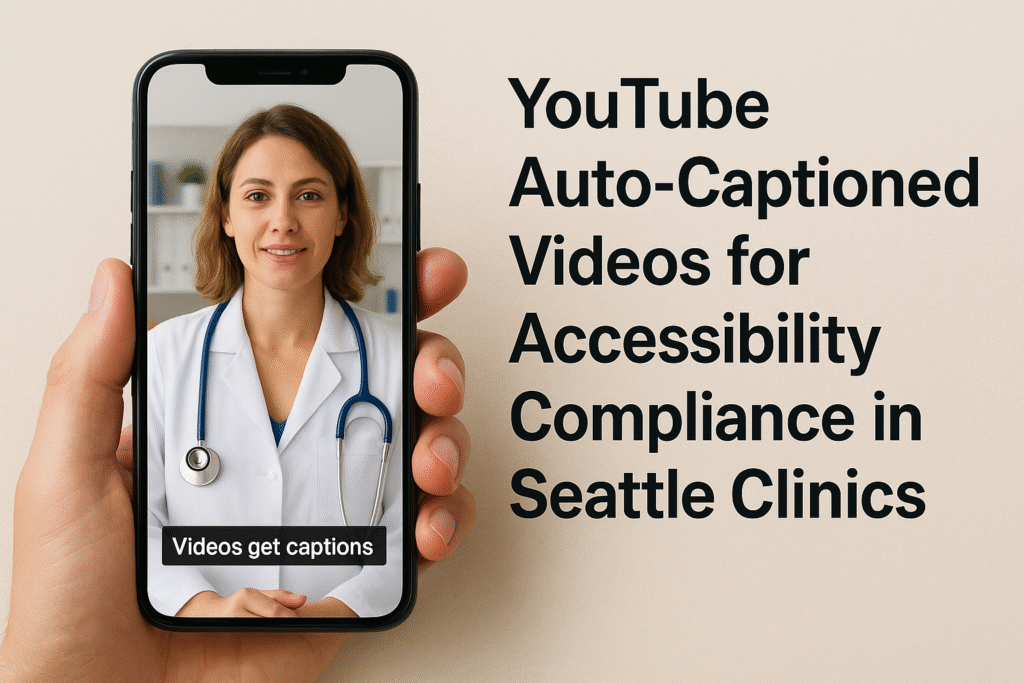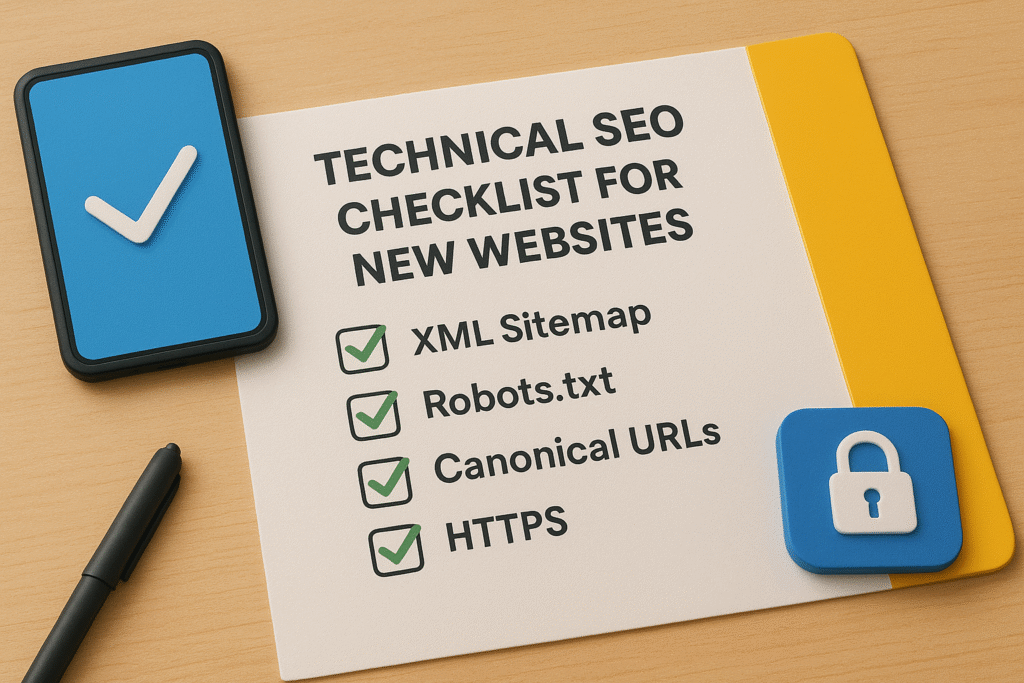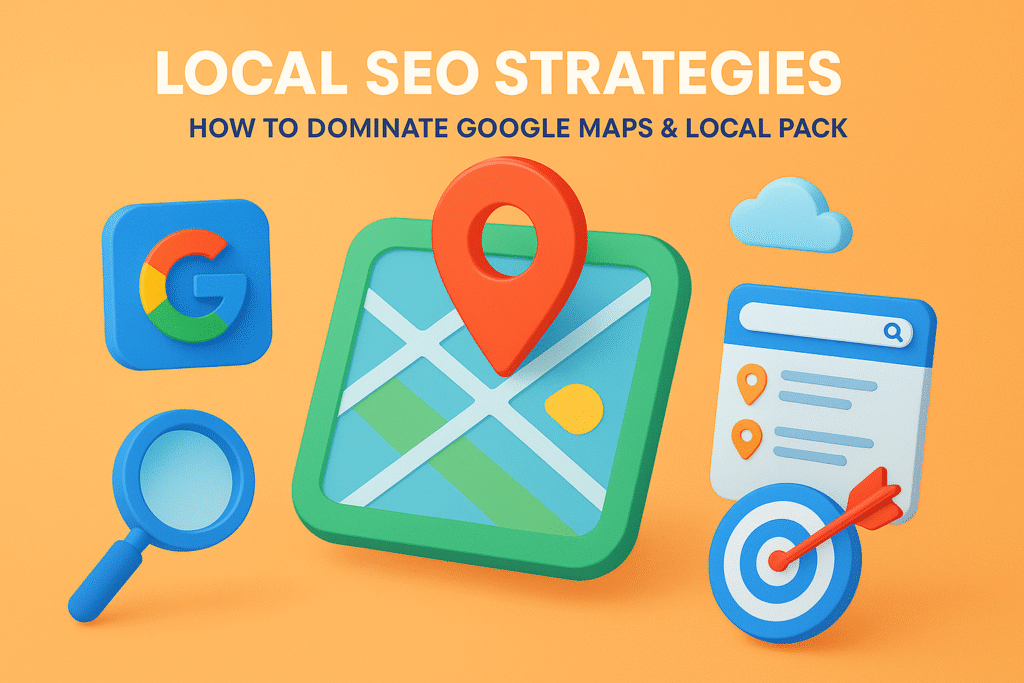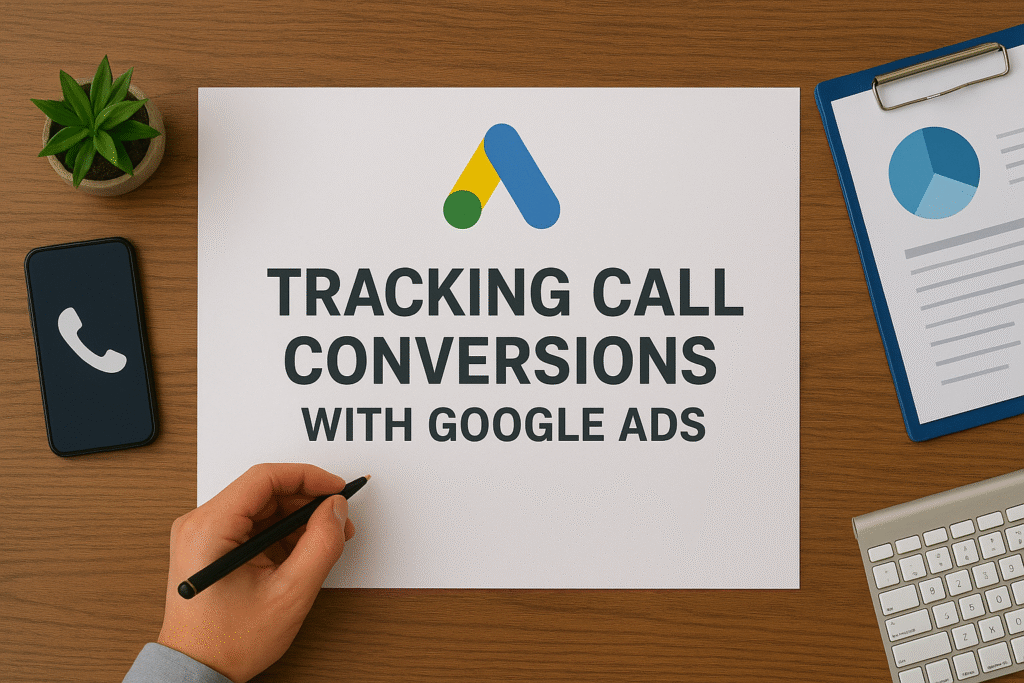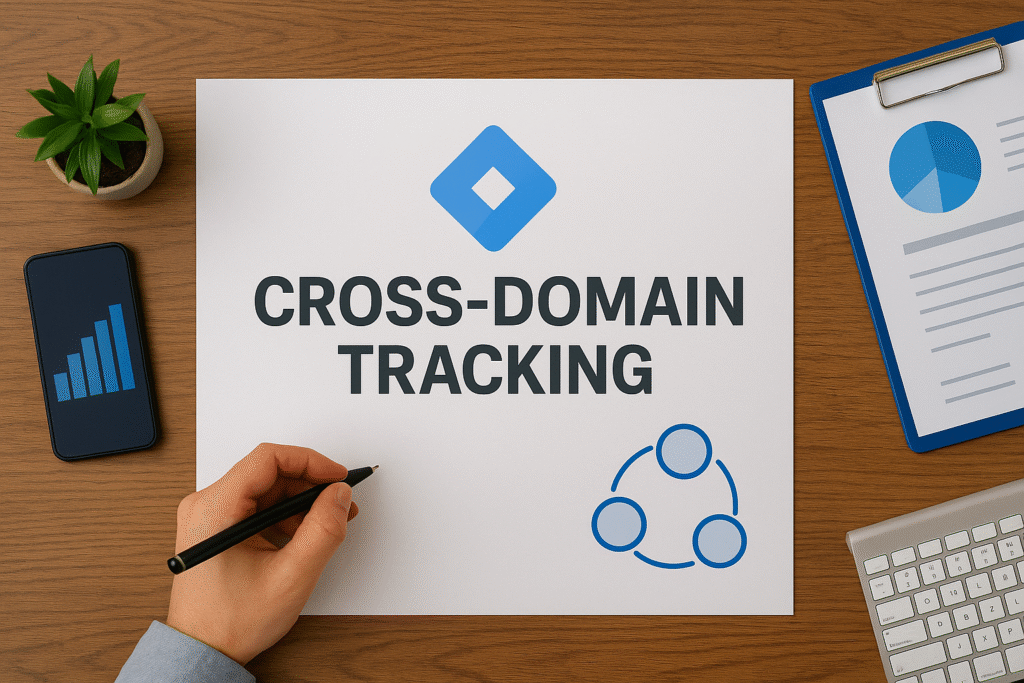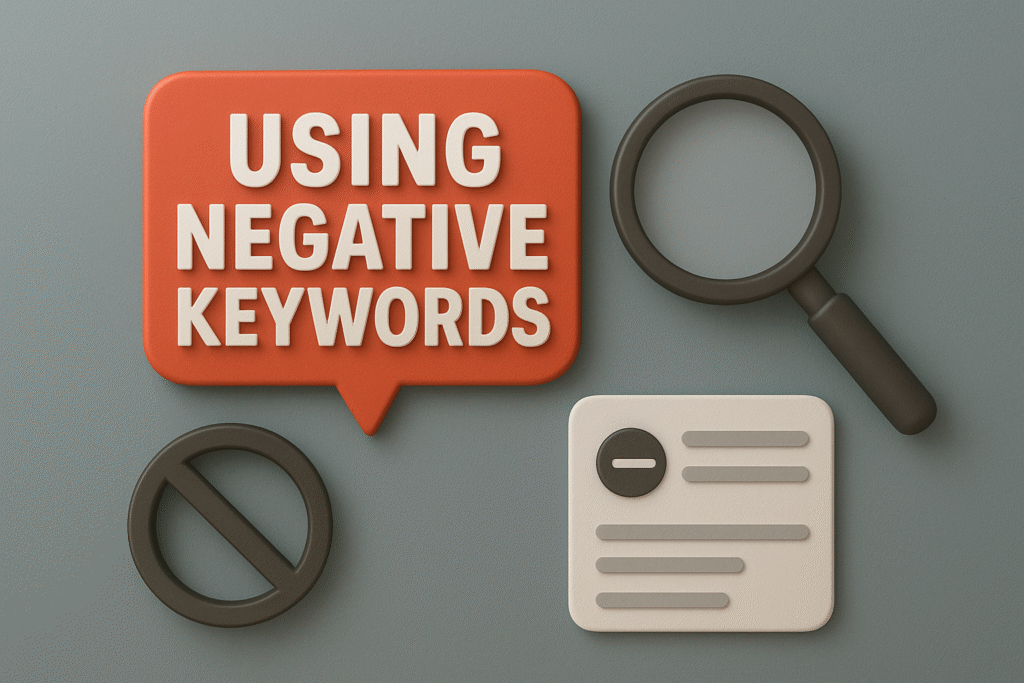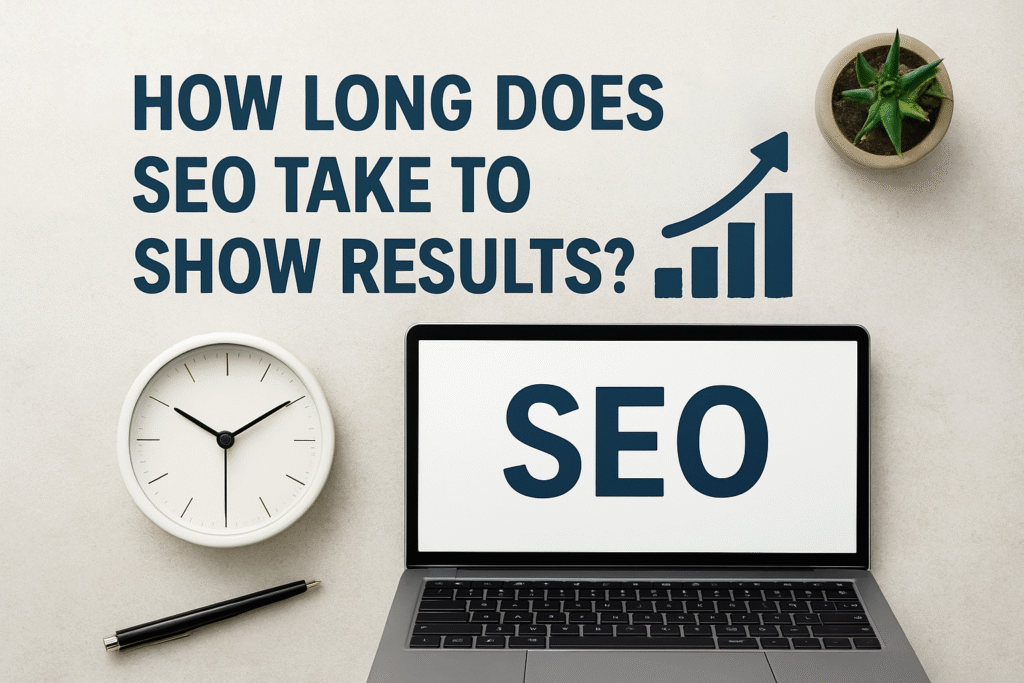Search engine optimization (SEO) is not a sprint — it’s a long game. When clients or businesses invest in SEO, one of the most common questions they ask is, “How long will it take to see results?” The reality is, the first 6 months of SEO are foundational. This period is about setting the stage, building trust with search engines, and executing a strategy that pays off over time. In this blog, I’ll walk you through exactly what happens during the first 6 months of SEO based on what I’ve done for my own clients and observed in campaigns.
According to a study by Ahrefs, only 5.7% of pages rank in the top 10 search results within a year of publication — and most of them took 2–6 months. This is proof that real results take real time.
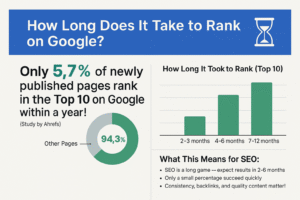
Month 1: SEO Audit, Strategy & Planning
The journey begins with an in-depth audit and roadmap creation. No shortcuts — just solid groundwork.
Here’s what I typically handle during Month 1:
-
Comprehensive SEO Audit: Identify technical issues, crawl errors, indexing problems, and page experience issues using tools like Google Search Console, Screaming Frog, and Ahrefs Site Audit.
-
Keyword Research: Discover high-intent keywords with the right balance of volume and competition.
-
Competitive Analysis: Understand what your top-ranking competitors are doing and how to outperform them.
-
Content Audit: Identify which pages to retain, update, or eliminate.
-
SEO Strategy Blueprint: Create a structured 6–12 month SEO action plan.
Pro Tip:
“Before thinking about rankings, build a website that search engines can crawl, understand, and trust.
Month 2: Technical Fixes & Core Optimization
In the second month, the focus shifts to technical SEO implementation and on-page optimization.
Key tasks include:
-
Resolving crawl issues, 404 errors, redirect chains
-
Enhancing website speed via Google PageSpeed Insights
-
Improving mobile usability and responsiveness
-
Adding schema markup using Schema.org
-
Cleaning and updating XML sitemaps and robots.txt
-
Optimizing metadata (titles, descriptions, header tags)
By the end of Month 2, the website becomes significantly more search-engine and user-friendly.
Month 3: Content Creation & Topic Clustering
This is where the content engine starts.
Content strategies I implement include:
-
Creating blog posts around long-tail, informational keywords
-
Updating product/service pages with optimized copy
-
Building topical clusters and internal linking structures to support pillar content
-
Publishing content that aligns with Google’s E-E-A-T principles — Experience, Expertise, Authoritativeness, and Trust
Month 4: Authority Building at Scale
While backlinks are pursued from Day 1, Month 4 is where momentum begins. By now, your optimized content starts getting discovered, indexed, and referenced.
Activities during this phase include:
-
Doubling down on outreach to authoritative websites for backlinks
-
Targeting industry-relevant sites for guest posting and digital PR
-
Promoting valuable content via LinkedIn, Quora, Reddit, and other referral platforms
-
Monitoring earned backlinks and disavowing spammy ones via Google Disavow Tool
Pro Tip:
“We plant the seeds for backlinks early, but Month 4 is when we push the pedal to scale high-quality link acquisition and improve Domain Authority.”
Month 5: Optimization Through Data
Now that there’s measurable activity, Month 5 becomes all about analyzing and improving performance.
Here’s what I focus on:
-
Track keyword rankings, CTRs, impressions using Google Search Console
-
Review traffic patterns in Google Analytics 4
-
Update underperforming content
-
Identify new content opportunities from Search Console queries
-
Expand content clusters with supporting blogs and deep internal links
At this point, SEO is like managing a living, breathing system. Every move is data-driven.
Month 6: Early Wins & SEO Momentum
By Month 6, real results begin to surface.
You can expect:
-
First-page rankings for long-tail and branded terms
-
Increased visibility in featured snippets or “People also ask”
-
20% to 100%+ growth in organic traffic (based on niche and competition)
-
Domain authority and trust metrics start to improve
-
ROI from blog traffic, service inquiries, or conversions
This is when the initial investment starts compounding. Your SEO becomes self-sustaining — as content, traffic, and backlinks begin to feed one another.
Beyond 6 Months: Scaling with Confidence
After 6 months, your site is no longer starting from scratch. It has:
-
A clean, crawlable, fast structure
-
Keyword-optimized, helpful content
-
A steady stream of backlinks
-
Established authority in your niche
This is the time to scale your SEO strategy, enter more competitive SERPs, and expand your content reach.
Final Thoughts
Understanding what happens during the first 6 months of SEO sets the right expectations. SEO is not instant. It’s not an ad campaign. It’s a strategic investment in long-term visibility. And if you stick with it, the rewards are compounding.
If you’re serious about building a strong online presence, now is the time to invest in real, consistent SEO work.
Ready to start your SEO journey the right way? Explore my full SEO approach here.
Read More:
-
Page Speed Optimization: How It Affects Long-Term SEO
-
Google GA4: A Complete Guide for Digital Marketers in 2025
-
10 Core Web Vitals and Their Impact on SEO
